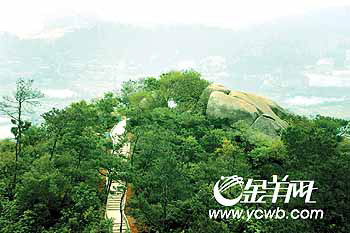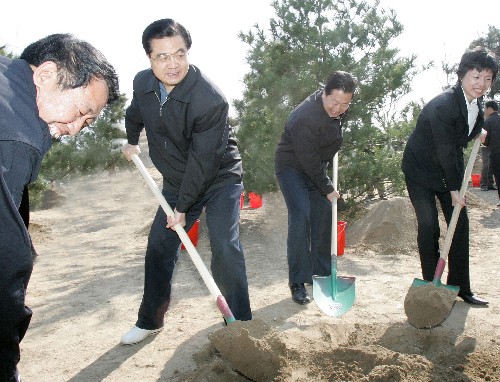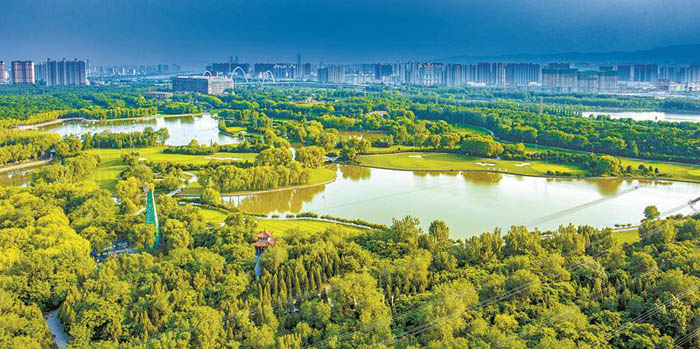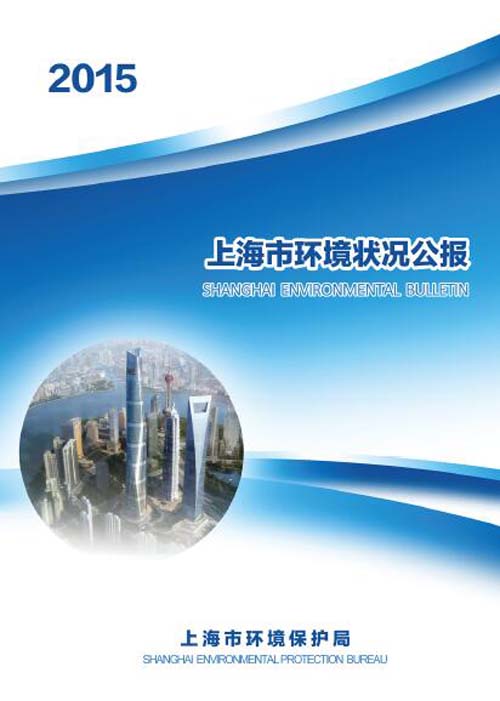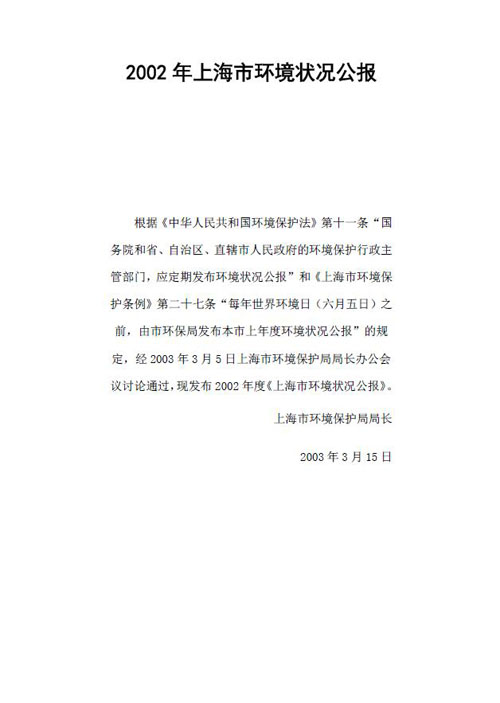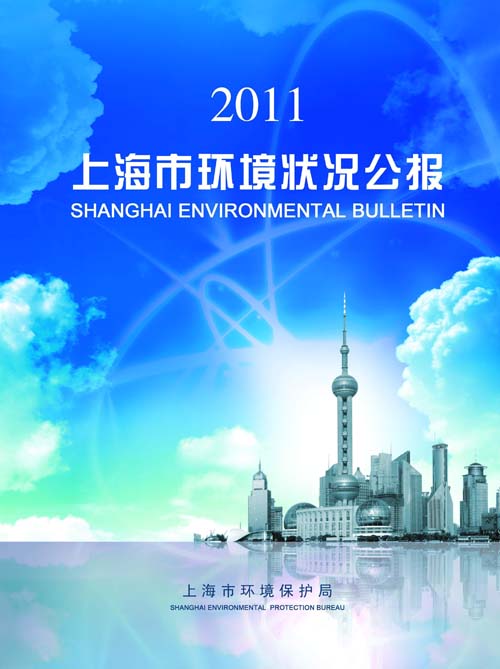
上海公园建设及其可达性的时空发展特征
编号
lyqk011239


中文标题
上海公园建设及其可达性的时空发展特征


作者单位
同济大学建筑与城市规划学院 上海 200092


期刊名称
中国城市林业


年份
2023


卷号
21


期号
5


栏目名称
研究论文


中文摘要
为深入探讨上海市公园建设及其可达性的时空发展特征,基于上海市公园建设数据与人口数据,综合考虑公园空间分布、面积、类型等多重因素,分析上海市公园建设趋势;针对高密度城区,基于2000年、2010年、2020年3个不同时间节点,在500 m栅格精度下,计算步行范围内人均公园面积,评价公园可达性。结果表明:1)截至2020年底,上海市共有406座城市公园,人均公园个数为0.163个/万人,人均公园面积约为1.47 m2/人。2)建设用地趋紧背景下,公园建设重心由内环移向外环,新建公园平均面积先增加后减少。3)公园建设与高密度城区匹配程度先降低后提升,即2000年约24%的高密度城区1 km范围内缺少城市公园,可达性欠佳;2010年约为38%;2020年为21%左右。4)中环外高密度城区仍有公园步行可达性欠佳的区域,需在未来规划中予以重视。


关键词
城市公园
步行可达性
高密度城区
人均公园面积
上海


基金项目
上海市科委科技创新行动计划(22692111700),中央高校基本科研业务费专项资金(22120220302)


英文标题
Spatio-temporal Development Characteristics of Park Construction and Accessibility in Shanghai


作者英文名
Zhai Yujia, Huo Junzi, Gong Ruoyu, Zhang Xin, Shi Cheng


单位英文名
College of Architecture and Urban Planning, Tongji University, Shanghai 200092, China


英文摘要
In order to discuss in depth the construction and accessibility of parks in Shanghai, this study analyzes the trends of park construction in Shanghai considering multiple factors such as spatial distribution, area and type of parks based on the data of parks and population. For high-dense urban areas, the park area per capita within walking distance is calculated at the grid accuracy of 500 m in 2000, 2010 and 2020, in order to evaluate park accessibility. The results show:1) By the end of 2020, there were 406 urban parks, or 0.163 parks per 10,000 persons, and the park area per capita was about 1.47 m2/person; 2) With limited construction lands in Shanghai, the construction sites for parks shifts from the inner ring area to the outer ring area, and the average area of new parks first increases and then decreases; 3) The level of matching between park construction and high-dense urban area first decreases and then increases. In 2000, about 24% of high-density urban areas had no urban parks within 1 km, which indicates a lower accessibility; in 2010 and 2020, the proportions were about 38% and 21%, respectively; and 4) The park accessibility in high-density urban areas outside the middle ring is still poor, and more attention will need to be paid to in the park planning.


英文关键词
urban park;pedestrian accessibility;high-dense urban area;park area per capita;Shanghai


起始页码
124


截止页码
130


投稿时间
2023/3/23


作者简介
翟宇佳(1985-),女,副教授,硕士生导师,研究方向为景观游憩与智能,建成环境与健康、城市景观风貌。E-mail:zhai@tongji.edu.cn


通讯作者介绍
施澄(1983-),男,助理研究员,主要研究方向为城市大数据与城市交通规划。E-mail:chengshi@tongji.edu.cn


E-mail
chengshi@tongji.edu.cn


DOI
10.12169/zgcsly.2023.03.23.0002


参考文献
[1] 刘颂, 詹明珠, 温全平.面向亚健康群体的城市绿色开敞空间规划设计初步研究[J].风景园林, 2010(4):90-93.
[2] YUEN H K, JENKINS G R.Factors associated with changes in subjective well-being immediately after urban park visit[J].International Journal of Environmental Health Research, 2020, 30(2):134-145.
[3] GILES-CORTI B, BROOMHALL M H, KNUIMAN M, et al.Increasing walking:how important is distance to, attractiveness, and size of public open space?[J].Active Living Research, 2005, 28(S2):169-176.
[4] 刘常富, 李小马, 韩东.城市公园可达性研究:方法与关键问题[J].生态学报, 2010, 30(19):5381-5390.
[5] 杨琛, 朱捷, 吕梁.重庆市中心城区绿地空间公平性分析[J].中国城市林业, 2022, 20(5):61-68.
[6] 陈岚, 成国强, 廖晨阳, 等.成都市武侯区城市公园可达性分析[J].中国城市林业, 2022, 20(2):30-35.
[7] 翟宇佳, 庄安頔, 龚修齐, 等.老年友好背景下基于实证的城市区域性公园服务半径研究:以上海市鲁迅公园为例[J].城市建筑, 2018(12):56-60.
[8] 邹兵.由增量扩张转向存量优化:深圳市城市总体规划转型的动因与路径[J].规划师, 2013, 29(5):5-10.
[9] 张庆费, 夏檑, 乔平, 等.上海公园的发展动态、分布格局与规模特征分析[J].中国园林, 2001, 17(1):58-61.
[10] 叶果, 李欣.上海中心城区多中心体系建设绩效研究[C]//2015中国城市规划年会.贵阳, 2015.
[11] SHAN X Z.The socio-demographic and spatial dynamics of green space use in Guangzhou, China[J].Applied Geography, 2014, 51:26-34.
[12] 李萌.基于居民行为需求特征的15分钟社区生活圈规划对策研究[J].城市规划学刊, 2017(1):111-118.
[13] 周玲娟, 张宥宥.高密度城市中心区生态绿地空间分布与可达性研究:以上海和伦敦为例[J].城市建筑, 2023, 20(2):175-181.
[14] 韩姝尧, 何荣晓, 王菲, 等.海口市中心城区绿色开放空间公平性评价[J].中国城市林业, 2022, 20(6):133-138.
[15] 沈娅男, 象伟宁, 车越.环境正义理念下上海中心城区公共绿地空间布局研究[D].上海:华东师范大学, 2017.
[16] XIAO Y, WANG D, FANG J.Exploring the disparities in park access through mobile phone data:Evidence from Shanghai, China[J].Landscape and Urban Planning, 2019, 181:80-91.
[17] CAO Y, GUO Y, ZHANG M.Research on the equity of urban green park space layout based on Ga2SFCA optimization method:taking the core area of Beijing as an example[J].Land, 2022, 11(8):1323.
[18] ZHANG Y Y, WU Q L, WU L, et al.Measuring community green inequity:a fine-scale assessment of Beijing urban area[J].Land, 2021, 10(11):1197.
[19] WEI K, SHA L, HUIDI Z.Method of accurately evaluating spatial equity of urban park green space:a case study of Haidian District, Beijing[J].Journal of Huazhong Agricultural University, 2022, 41(1):160-169.
[20] POUYA S M, AGHLMAND M.Evaluation of urban green space per capita with new remote sensing and geographic information system techniques and the importance of urban green space during the COVID-19 pandemic[J].Environmental Monitoring and Assessment, 2022, 194(9):633.
[21] HUANG C H, YANG J, LU H, et al.Green spaces as an indicator of urban health:evaluating its changes in 28 Mega-Cities[J].Remote Sensing, 2017, 9(12):1266.
[22] MENG R, XU B Y, ZHAO F, et al.Characterizing the provision and inequality of primary school greenspaces in China's major cities based on multi-sensor remote sensing[J].Urban Forestry and Urban Greening, 2022, 75:127670.


PDF全文
浏览全文


-
相关记录
更多
- 公民科学在深圳城市公园蝴蝶多样性保护中的应用 2024
- 城市公园中风景感召的营造及其正面效益 2024
- 城市公园常见植物固碳能力评估 2024
- “全健康”视角下城市生态疗愈公园设计 2024
- 不同城市热岛梯度下公园冷岛效应和景观特征的关联机制 2024
- 基于自然语言处理的北京城市公园使用后评价 2023
 打印
打印
